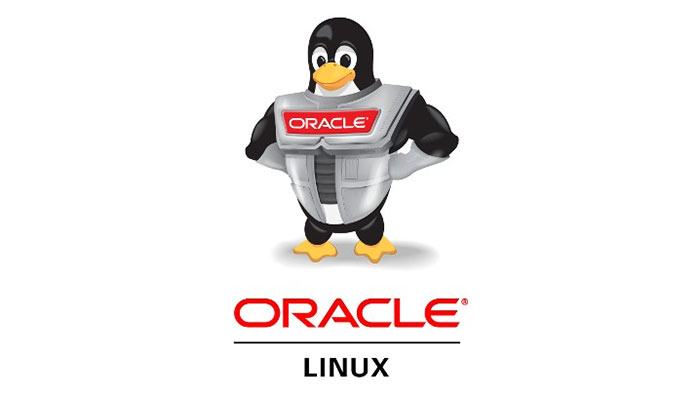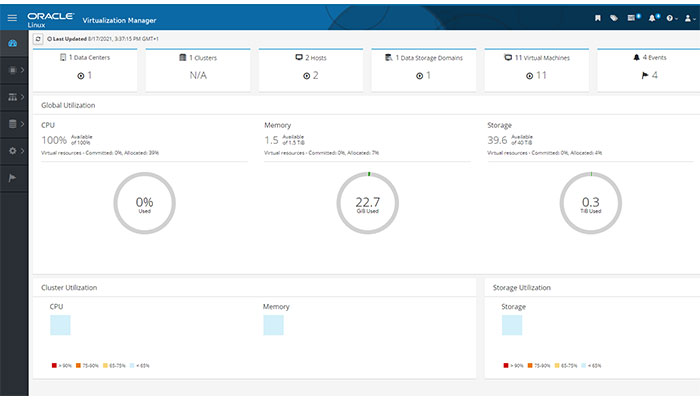Oracle Linux licenses
Beyond flexibility and cost-effectiveness in terms of open source, the licensed Oracle Linux brings with it Enterprise-level performance, high security, and the critical role of reliability, stability, and high serviceability (RAS). But what separates Oracle Linux from other operating systems – especially in database transactions – is the advantages it offers in order to consolidate the platform’s depth and the solution stack. It is the result of optimizing the results obtained from cooperation with industries and increasing the stability of the kernel (Unbreakable Enterprise Kernel).
Transaction Performance and Scale
The database team and the Oracle Linux engineering team have continuous cooperation to carry out enhancement and optimization projects to improve the database performance. For example, when the traditional interprocess transfer mechanism (IPC) shows stability issues under heavy load, Oracle engineers have come up with a new policy called Reliable Datagram Sockets (RDS). A connectionless protocol with low latency to reliably deliver datagrams to thousands of destination ports. The result of using RDS is to reduce dispersion. This technology significantly enhances database performance, especially during peak transactions.
Oracle contributed the RDS code to the open source software community and it is now part of the Linux kernel. Finally, Oracle database engineers can simplify the database code by removing subcodes that are addressed by volatile objects. This allows the licensed Oracle Linux to take a big step towards high-performance database transactions.
The rest of the optimizations that have been carried out in order to accelerate the performance are the X86 multicore processing and the advanced architecture of this system. The history of Linux shows that this operating system is basically focused on processing information in high-performance computing for various applications.
InfiniBand (Extremely High Speed Transaction Processing Switch) provides superior throughput, low latency and excellent scalability, which is continuously used as integrated switching for HPC (High-Performance Computing) applications. This technology is currently a common technology in the data centers of organizations.
How does Oracle Linux InfiniBand help your network?
It is noteworthy that the InfiniBand switches are a critical component in the Oracle Exadata Database machine (a system designed by Oracle that is intended to increase performance), and in which InfiniBand provides high-bandwidth communications between system processes and Provides storage nodes. The power of information performance in Oracle Exadata largely depends on the optimization of InfiniBand network packages (networking stack) in Oracle Linux. The cooperation in management between the suppliers of InfiniBand products and Mellanox technologies has made Oracle developers use the Oracle Linux InfiniBand stack in order to measure the throughput in support of high load volumes. Finally, Oracle has introduced these performance-related upgrades for InfiniBand as one of the technologies created by the Oracle Linux team to the open source software community.
Collaboration with Intel is also one of the extensions that benchmark Oracle Database applications for better performance on X86 servers with the licensed Oracle Linux operating system. This solution allows Oracle Database to take advantage of Intel SIMD and AVX, instructions that promote NUMA (Non-uniform memory access) scalability.
In addition, the Oracle Database software uses the Intel IPP (Intel Integrated Performance Primitives) library to accelerate the columnar compression of the encryption operation. For database-type applications that are implemented on Oracle Linux, Oracle and Intel recommend that the Intel compiler be optimized in order to achieve the best performance.
Oracle Linux with Kernel Core
The licensed Oracle Linux Oracle Linux with UEK (Unbreakable Enterprise Kernel) includes extensive scalability and performance enhancements for process scheduling, memory management, filesystems, and network packages. This system is designed to perform better and faster on the leading x86 system in order to configure features such as many CPU cores and high amounts of memory.
By optimizing libraries and system calls, the performance of Oracle database queries is also improved. Because of this optimization and comprehensive testing that is done in Oracle database, Oracle Linux can address high capacity transactions and it corresponds well with the number of database users and the number of databases that are added.
For companies that have unified different databases on version 12c, excellent response time for transactions and proper scalability will be key factors for participating in a cost-effective structure.
Maximum stability with Oracle Clusterware
Oracle’s various database management tools have a continuous emphasis on high availability. That’s why Oracle has offered Oracle Clusterware as the foundation for Oracle Linux and prioritized support at no extra cost. Oracle Clusterware is a software that allows multiple Oracle Linux servers to act as a system, this feature provides redundancy in case of hardware and software problems. Each node communicates through a private interconnect, and this connection is a pulse of the availability of each node in clustering.
End-to-end advanced data integrity solution
Oracle Database and Oracle Linux engineering team has always cooperated with third-party tool vendors. This cooperation was aimed at developing innovative data aggregation solutions to eliminate silent data corruption.
Silent data corruption is a failure where an invalid data is read or written without registering an I/O error in the application or operating system. This case usually happens during minor breakdowns or administrative mistakes.
Oracle engineers have built data integrity solutions based on the T10 PI (T10 Protection Information) standard. This standard undertakes the task of controlling the integration (integrity checking) of the end-to-end data path – from the Application side to the operating system through the switches and the host bus adapter port or to the Storage side.
Data protections and built-in security
In addition to the developments that Oracle Linux has had for database applications, this operating system has provided advanced features on an enterprise scale to ensure data security and access. Linux open source software has received serious scrutiny from the development community and has resulted in significant improvements in security. The result of this test on Oracle Linux has shown that this system is powerful in security indicators such as IP filtering with Firewall facilities, strong encryption and SELinux mechanisms at the military and security level.
Streamlining Virtualized Workloads
In order to save costs and access and quickly move systems, many organizations have moved the Oracle database from physical servers to virtual environments. Also, some of them have used the advantage of the adaptability of Oracle Linux in the virtual environment. In order to simplify the process of transferring programs from physical to virtual environments, Oracle Linux and Oracle VM team have cooperated extensively to ensure the compatibility of the two. The research results have shown that virtual environments have better performance in the use of licenses and resources under equal conditions.
Managing resources
Allocation of system resources (CPU, memory, network bandwidth and storage) for specific processes such as Oracle Database instances, helps critical applications (strategic applications) consume the resources they need. At the same time, these resources are limited for other unnecessary uses. The licensed Oracle Linux is in charge of resource management using a feature called control groups (cgroups) that was introduced in Linux version 6.
For the Oracle database in large systems (such as Oracle Exadata Database Machine X3-8), the value of cgroups is well demonstrated, because it becomes possible to implement “instance caging” or the assignment (Binding) of each instance to a specific CPU. In the NUMA (Non-uniform memory access) architecture, this is the result of assigning processes to the same nodes of processors and memory. This way of connecting NUMA is a trump card in terms of performance, which allows each processor to access local memory and in addition to non-local memory, which significantly increases the speed of memory access.



